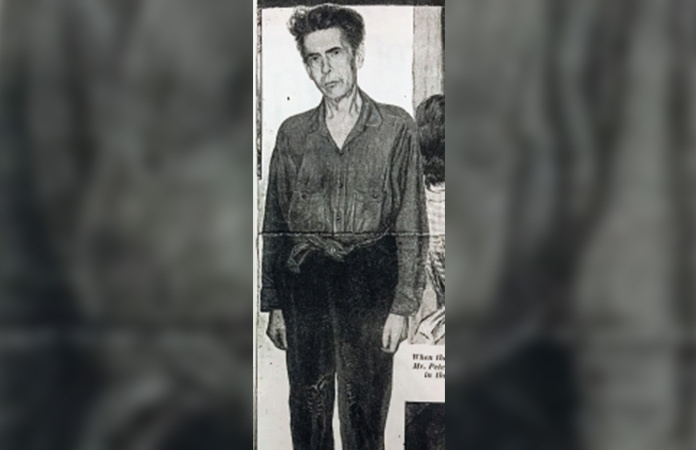

“Spider-Man” is synonymous with superheroes as a decades-old pop icon depicted in numerous movies, animated shows and TV revivals. Denver’s Spider Man is vastly different from Stan Lee’s Peter Parker, and lacked the famed “spidey sense,” as he was caught crawling back into the attic of his murder victim by police. Theodore Coneys was given the unusual moniker after committing a brutal 1941 murder and then living in his victim’s attic for the subsequent nine months.
Coneys in September 1941 saw Philip Peters, an acquaintance from the Denver Guitar Club and retired rail worker, leave his home off Moncrieff Place and allegedly broke into 73-year-old Peters’ house and proceeded to hide in the attic, avoiding discovery for nearly a month.
Peters allegedly woke from a nap to find a “gaunt and disheveled Coneys” standing at the opened refrigerator. Peters tried to scare Coneys off by striking him with his cane and turning to call the police, but Coneys began clubbing him with an old pistol he found in the house. Reportedly, Coneys bludgeoned Peters so hard that the pistol broke apart in his hands and Coneys instead began beating him with a cast iron stove shaker before cleaning the weapon, grabbing some food and fleeing back into the attic cubbyhole. Peters was allegedly struck more than 35 times.
Neighbors, who had been caring for Peters while his wife recovered in the hospital from a broken hip, were expecting him for dinner that evening and discovered his body, but when the police arrived, they found no evidence of forced entry and nothing linking anyone to the crime. Police assumed the discarded stove shaker to be the murder weapon but were quickly bemused by a number of oddities including the presence of large sums of money left out in the open, which negated the likelihood of a robbery. Afterward, newspapers reportedly called the crime “the Denver ghost house slayings.”
Peters’ widow returned home from her hospital stay and began living at the house with friends on night and day shifts to help her as she recovered more fully. She sustained a second broken hip only a few weeks into her stay and went back to the hospital before returning a second time. At the house, the women noticed missing food, displaced items, strange sounds and other odd happenings.
Peters’ widow left for Grand Junction some months later to live with family, as her friends resigned amid accusations the property was haunted. The house had been left apparently vacant but neighbors continued to call in strange sounds, sightings of someone walking around inside and “disgusting smells” until Denver police responded by sending two officers to survey the outside of the house and watch for anything unusual.
After an unsuccessful stakeout of the house and months of strange reported sightings and happenings, local newspapers began calling the house on Moncrief, “the Ghost House of Denver.”
During what was becoming a routine search, officers heard noises from upstairs, catching sight of Coneys’ retreating legs into the attic space and heaving him down. Coneys was taken into custody and confessed, saying he broke into the house to hide out in for the winter. He said the decision to beat Peters to death was that of a split second of panic at being caught.
Denver police allegedly sent their smallest officer into the tiny attic cubbyhole to investigate Coneys’ hiding spot and he reported the man had saved all of his waste and piled it into a corner, likely had not bathed the entire time he was there and was living in a kind of makeshift nest. This officer, after recovering from being violently ill on the scene, allegedly said, “a man would have to be a spider to stand it long up there.” Newspapers covering the events dubbed Coneys the Denver Spider Man.
According to records, Coneys was charged and convicted of murder. He was sentenced in October 1942 to life in prison at the state penitentiary in Cañon City. Coneys stayed at the prison until his death in 1967.
Coneys may not be as popular as Marvel’s Spiderman but has been referenced in Erle Gardner’s 1956 novel “Beware the Curves,” and in an episode of CSI: Crime Scene Investigation and in The Simpsons.
– Jess Brovsky-Eaker, [email protected]

